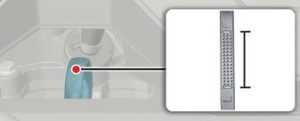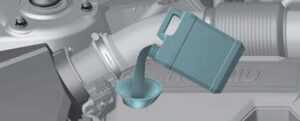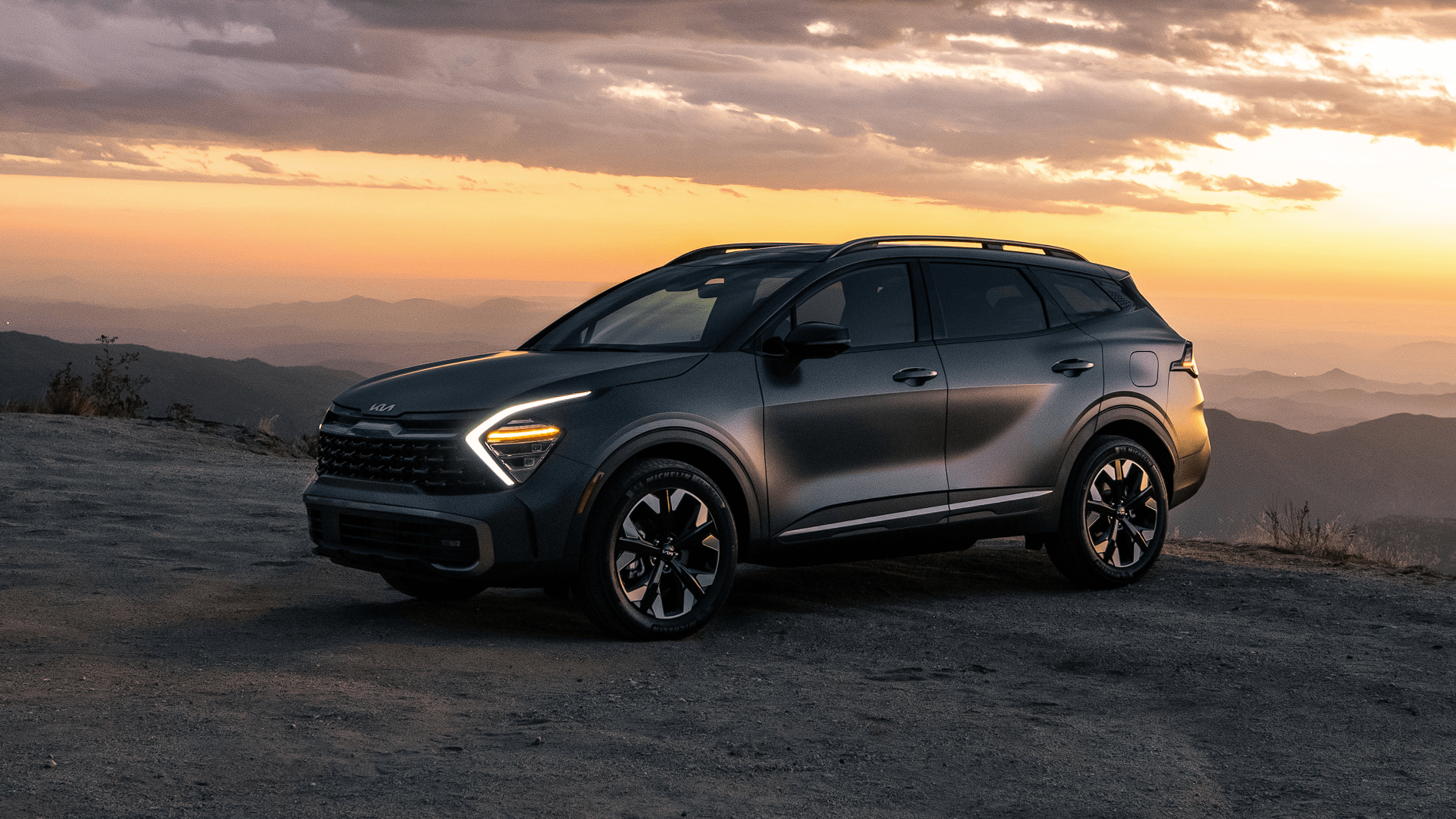Kia Sportage PHEV 2023 Explanation of Scheduled Maintenance Items and Engine Oil
The 2023 Kia Sportage PHEV is a beautiful example of how innovation and performance can work together in the world of car engineering. For this one-of-a-kind vehicle, a carefully planned schedule of regular repair tasks and the careful choice of engine oil are two of the most important things that can be done to keep it running at its best. If we want to learn how to properly keep the 2023 Kia Sportage PHEV, we will be going into a world where rotating the tires, checking the fluids, and testing the battery are all normal things that should be done regularly. At its heart is the engine oil, a necessary lubricant that keeps the hybrid powertrain running smoothly. It’s important to use the right type of oil and change it at the right time. Based on Kia’s dedication to excellence, these maintenance routines show how important it is to take care of this amazing PHEV so that you can enjoy a driving experience that is reliable, efficient, and a smooth blend of technology and performance.
2023 KIA SPORTAGE Specs, Price, Features and Mileage (Brochure)
Explanation of scheduled maintenance items
Engine oil and filter
The engine oil and filter should be changed at the intervals specified in the maintenance schedule. If the vehicle is being driven in severe conditions, more frequent oil and filter changes are required.
HSG (Hybrid Starter and generator) belt
Inspect HSG belt for evidence of cuts, cracks, excessive wear or oil saturation and replace if necessary.
CAUTION
When you are inspecting the belt, place the ignition switch or ENGINE START/STOP button in the LOCK/OFF or ACC position.
Fuel filter
The fuel filter is considered to be maintenance free but periodic inspection is recommended for this maintenance schedule depends on fuel quality.
If there are some important safety matters like fuel flow restriction, surging, loss of power, hard starting problem etc., replace the fuel filter immediately regardless of maintenance schedule and consult an authorized Kia dealer for details.
Fuel lines, fuel hoses and connections
Check the fuel lines, fuel hoses and connections for leakage and damage. Have the fuel lines, fuel hoses and connections replaced by an authorized Kia dealer.
Vapor hose and fuel filler cap
The vapor hose and fuel filler cap should be inspected at the intervals specified in the maintenance schedule. Make sure that a new vapor hose or fuel filler cap is correctly replaced.
Vacuum crankcase ventilation hoses
Inspect the surface of hoses for evidence of heat and/or mechanical dam-age. Hard and brittle rubber, cracking, tears, cuts, abrasions, and excessive swelling indicate deterioration. Particular attention should be paid to examine those hose surfaces nearest to high heat sources, such as the exhaust manifold.
Inspect the hose routing to assure that the hoses do not come in contact with any heat source, sharp edges or moving component which might cause heat damage or mechanical wear. Inspect all hose connections, such as clamps and couplings, to make sure they are secure, and that no leaks are present. Hoses should be replaced immediately if there is any evidence of deterioration or damage.
Air cleaner filter
Have the air cleaner filter replaced by an authorized Kia dealer.
Spark plugs
Make sure to install new spark plugs of the correct heat range. When assembling parts, be sure to wipe the inside and outside of the boot bot-tom of the ignition coil and the insulator of the spark plug with a soft cloth to prevent contamination of the spark plug insulator.
WARNING
Do not disconnect and inspect spark plugs when the engine is hot. You may burn yourself.
Cooling system
Check the cooling system components, such as the radiator, coolant reservoir, hoses and connections for leakage and damage. Replace any damaged parts.
Coolant
The coolant should be changed at the intervals specified in the maintenance schedule.
Automatic transmission fluid
Automatic transmission fluid should not be checked under normal usage conditions. Have the automatic transmission fluid changed by an authorized Kia dealer.
NOTICE
The automatic transmission fluid color is basically red.
As the vehicle is driven, the automatic transmission fluid will begin to look darker. It is a normal condition and you should not judge the need to replace the fluid based upon the changed color.
CAUTION
The use of a non-specified fluid could result in transmission malfunction and failure. Use only specified automatic transmission fluid.
Brake hoses and lines
Visually check for proper installation, chafing, cracks, deterioration and any leakage. Replace any deteriorated or damaged parts immediately.
Parking brake
Inspect the parking brake system including the parking brake lever (or pedal) and cables.
Brake fluid
Check the brake fluid level in the brake fluid reservoir. The level should be between “MIN” and “MAX” marks on the side of the reservoir. Use only hydraulic brake fluid conforming to DOT 4 specifications.
Exhaust pipe and muffler
Visually inspect the exhaust pipes, muffler and hangers for cracks, deterioration, or damage. Start the engine and listen carefully for any exhaust gas leak-age. Tighten connections or replace parts as necessary.
Brake discs, pads and calipers
Check the pads for excessive wear, discs for run out and wear, and calipers for fluid leakage.
Suspension mounting bolts
Check the suspension connections for looseness or damage. Retighten to the specified torque.
Steering gear box, linkage & boots/lower arm ball joint
With the vehicle stopped and engine off, check for excessive free-play in the steering wheel. Check the linkage for bends or damage. Check the dust boots and ball joints for deterioration, cracks, or damage. Replace any damaged parts.
Drive shafts and boots
Check the drive shafts, boots and clamps for cracks, deterioration, or dam-age. Replace any damaged parts and, if necessary, repack the grease.
Air conditioning refrigerant
Check the air conditioning lines and connections for leakage and damage.
Propeller shaft (if equipped)
Check the propeller shaft, boots, clamps, rubber coupling and center bearing rubber for cracks, deterioration, or damage. Replace any damaged parts and if necessary, repack the grease.
Checking fluid levels
When checking engine oil, engine cool-ant, brake fluid, and washer fluid, always be sure to clean the area around any filler plug, drain plug, or dipstick before checking or draining any lubricant or fluid. This is especially important in dusty or sandy areas and when the vehicle is used on unpaved roads. Cleaning the plug and dipstick areas will prevent dirt and grit from entering the engine and other mechanisms that could be damaged.
Engine oil
Checking the engine oil level
Engine oil is used for lubricating, cooling, and operating various hydraulic components in the engine. Engine oil consumption while driving is normal, and it is necessary to check and refill the engine oil regularly. Also, check and refill the oil level within the recommended maintenance schedule to prevent deterioration of oil performance.
Check the engine oil following the below procedure.
Smartstream G1.6 T-GDi HEV/PHEV

- Be sure the vehicle is on level ground.
- Start the engine and allow it to reach normal operating temperature.
- Turn the engine off, remove the oil filler cap and pull the dipstick out. Wait for 15 minutes for the oil to return to the oil pan.
- Wipe the dipstick clean and re-insert it fully.
- Pull the dipstick out again and check the level. Check if the oil level is between the F-L line, and if it is below the L line, add enough oil to bring the level to F line.
WARNING
Radiator hose
Be very careful not to touch the radiator hose when checking or adding the engine oil as it may be hot enough to burn you.
CAUTION
When you wipe the oil level gauge, you should wipe it with a clean cloth. When mixed with debris, it can cause engine damage.
Smartstream G1.6 T-GDi HEV/PHEV

Use a funnel to help prevent oil from being spilled on engine components.
- Do not spill engine oil when adding or changing engine oil. Wipe off spilled oil immediately.
- The engine oil consumption may increase while you break in a new vehicle and it will be stabilized after driving 4,000 miles (6,000 km).
- The engine oil consumption can be affected by driving habits, climate conditions, traffic conditions, oil quality, etc. Therefore, it is recommended that you inspect the engine oil level regularly and refill it if necessary.
2023 KIA SPORTAGE Specs, Price, Features and Mileage (Brochure)
Changing the engine oil and filter
The lubrication, rust prevention, cooling, and cleaning effect of the engine oil will gradually degrade during its use. Have the engine oil and filter changed by an authorized Kia dealer according to the Engine Oil Life Management System instructions or the maintenance schedule.
- If the maintenance schedule to replace engine oil is exceeded, the engine oil performance may deteriorate, and the engine condition may be affected. Therefore, replace the engine oil according to the maintenance schedule.
- To keep the engine in optimal condition, use the recommended engine oil and filter. If the recommended engine oil and filter are not used replace it according to the maintenance schedule under severe usage conditions.
- The purpose of the maintenance schedule for engine oil replacement is to prevent oil deterioration and it is irrelevant to oil consumption. Check and refill engine oil regularly.
WARNING
Used engine oil
Used engine oil may cause irritation or cancer of the skin if left in contact with the skin for prolonged periods of time. Used engine oil contains chemicals that have caused cancer in laboratory animals. Always protect your skin by washing your hands thoroughly with soap and warm water as soon as possible after handling used oil. Do not leave used engine oil within the reach of children.
NOTICE
- When the oil pressure is low due to insufficient engine oil, the Engine Oil Pressure ( ) warning light will appear.
In addition, the enhanced engine protection system, which limits the engine’s power is activated and the Malfunction Indicator Lamp ( ) will appear when the vehicle is driven in this state continuously. - When oil pressure is restored, the Engine Oil Pressure warning light will turn off and the engine power will no longer be limited.
CAUTION
The engine oil is very hot immediately after the vehicle has been driven and can cause burns during replacement. Replace the engine oil after the engine oil has cooled down.
FAQ
Common scheduled maintenance items include oil changes, tire rotations, brake inspections, fluid checks, and battery health assessments.
The frequency of oil changes can vary, but it is typically recommended every 7,500 to 10,000 miles, or as specified in the owner’s manual.
The specific type and viscosity of engine oil required for the 2023 Kia Sportage PHEV can be found in the owner’s manual, but it is typically a synthetic or synthetic blend.
It’s best to follow the manufacturer’s recommendations and use the type of oil specified in the owner’s manual, which is often synthetic or synthetic blend for PHEVs.
You can typically check the engine oil level using the dipstick located in the engine compartment. Refer to the owner’s manual for specific instructions.
Engine oil changes in a PHEV are similar to those in traditional vehicles, but it’s essential to use the correct type of oil and follow the manufacturer’s guidelines for PHEVs.
Some vehicle owners may choose to change the engine oil themselves, but it’s important to follow proper procedures and use the recommended oil to ensure warranty coverage and vehicle performance.
Tire rotation is typically recommended every 6,000 to 8,000 miles, but specific intervals may vary depending on driving habits and conditions.
Scheduled maintenance should include checks of transmission fluid, coolant, brake fluid, and power steering fluid levels, along with topping off or changing fluids as needed.
Yes, Kia typically provides a maintenance schedule in the owner’s manual, outlining the recommended maintenance tasks and their intervals.
While the hybrid components may have unique maintenance needs, they are typically inspected and serviced by trained technicians during scheduled maintenance visits.
While some aftermarket parts may be suitable, it’s generally recommended to use genuine Kia parts for scheduled maintenance to ensure compatibility and quality.
The electric components, including the battery, may have specialized maintenance requirements, and these should be followed as outlined in the owner’s manual.
Neglecting scheduled maintenance can potentially void or limit the warranty coverage, so it’s essential to adhere to the manufacturer’s recommended maintenance schedule.
You can locate a certified Kia service center through the Kia website or by contacting a Kia dealership in your area.
Useful Link
View Full User Guide: Kia Sportage PHEV 2023 User Guide
Download Manuals: https://owners.kia.com/content/owners/en/manuals.html
2023 KIA SPORTAGE Specs, Price, Features and Mileage (Brochure)


